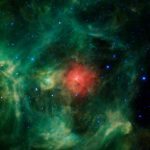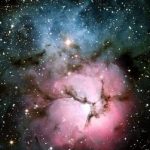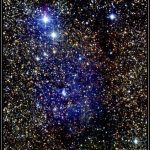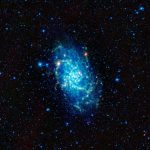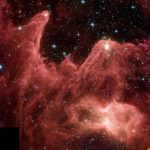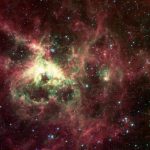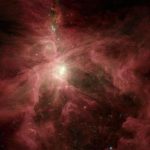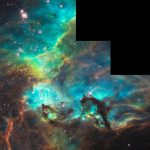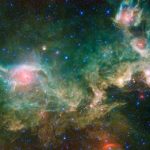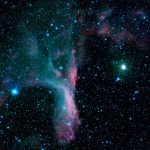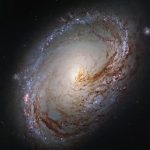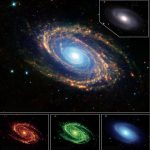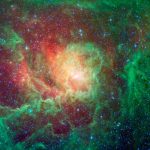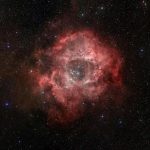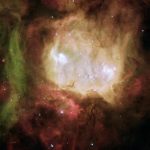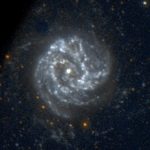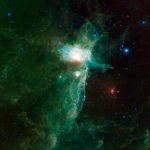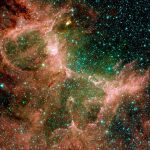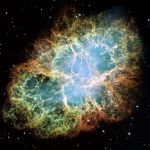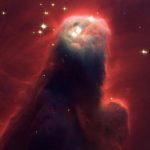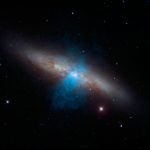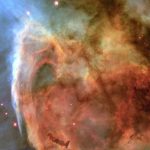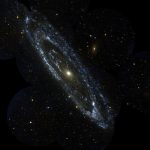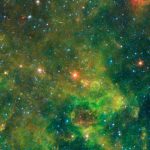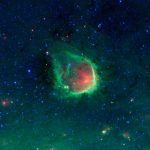Next Post – Sept 25
First, a schedule change. I’ve been doing these posts weekly, each Friday since April. But now that my school year is about to start and my responsibilities are increasing, I’m going to change it to every other Monday, alternating it with the posts on my author’s website, www.CatherineJaime.com. So the next post on the www.CreativeLearningConnection.com blog should appear on Monday, September 25, and every two weeks after that.
Enjoying Astronomy

The Starburst Galaxy, Messier #94
I’ve mentioned here before (most recently during last week’s post) that I’m not an astronomer, not even a hobby astronomer (wonder if they call themselves that?). But I have been fascinated by astronomy for a long time. I think I know enough about it to be dangerous! My sky knowledge is generally limited to being able to pick out three constellations – Orion and the Big and Small Dippers. I enjoy trying to watch meteor showers and eclipses (solar or lunar) when I get a chance. And I love looking at NASA photographs – especially of distant galaxies and other “Messier objects.” That may very well sum up the scientific portion of my astronomy knowledge. (Being a historian by nature, I do know a bit more about the history of astronomy, though it’s a topic I haven’t studied particularly recently, so no fair trying to test my knowledge there!)
The Heavens Declare His Glory

Pillars of Creation
As a creationist, I love the fact that the heavens show us the glory of God. So even though my academic knowledge of the subject is fairly low, my appreciation level is quite high. I have stood under the starry skies in various places throughout the world (something I try to do on every cruise ship I sail on), just to enjoy the magnificence of the view. I don’t have to be able to identify the flowers in a garden to appreciate their beauty and their Creator, and I don’t have to know a ton about what I’m seeing in the sky to appreciate its significance. In order to learn a little more about what I see, I often read the books and blog put out on the Classical Astronomy website. And I very much agree with his tagline – “The heavens declare the glory of God, and the firmament shewth His handiwork.” (Psalm 19:1)
Change of Plans, Again!
So, all of that is my very long introduction into what will probably be a fairly short post. (Though I have thought that before and been totally incorrect!) I actually had another post started for today, but once again the importance of the date changed my mind. (Earlier this week I redid my September 11th post on my author’s website, in order to honor the memory of those who had died on that date sixteen years earlier.)
Cassini Spacecraft

The Launch of the Cassini Spacecraft
Today’s change was for a vastly different type of event – the end of the mission for NASA’s Cassini spacecraft. While reading a local newspaper yesterday, I stumbled upon mention of this upcoming event and off I went to learn more.
Cassini’s journey to Saturn began with liftoff from Cape Canaveral in 1997. It ended today with an intentional descent into Saturn’s atmosphere. Cassini has been observing Saturn and its moons since it arrived in that area of our solar system in 2004. It has been sending data and photographs back to NASA. And while at least most of the scientists at NASA interrupt that data as proof of evolution, creationists can agree to disagree with them. The more information NASA collects about our amazing galaxy, the more we see the hand of God!
The End of the Journey

Rings of Saturn from the Cassini Spacecraft
But whichever side of the creation/evolution you find yourself on, I can strongly encourage you to take a look at some of the wonderful images that can be found on www.NASA.gov. And with the end of the Cassini mission, they have put even more great resources on the site, including (but certainly not limited to):
- NASA’s updates on Cassini’s Grand Finale: https://saturn.jpl.nasa.gov/grandfinale
- Lots of resources about Cassini: https://saturn.jpl.nasa.gov/resources/?topic=178
- And a Free e-book: The Saturn System through the eyes of Cassini
A Plunge Towards Saturn

Overview of the Cassini Mission
As the Cassini spacecraft finished its twenty year journey of exploration, it was starting to run low on fuel. NASA scientists made the decision to turn the spacecraft towards Saturn so that it would end its days burning up in the atmosphere of Saturn, rather than risking a collision with one of Saturn’s moons. This morning the spacecraft did exactly that, plunging into Saturn’s atmosphere as had been planned.
If you have a few minutes, take a look at NASA’s website and enjoy the views!
Happy star-gazing!
Cathy










